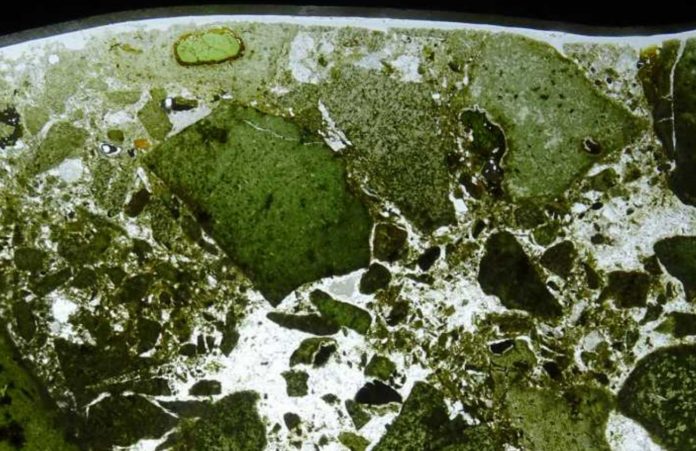The fast growth of fauna 540 million years ago transformed the Earth forever – down into its lower mantle.
A team led by Andrea Giuliani of ETH discovered evidence of this development in rocks from this zone.
It’s obvious that events occurring deep within the Earth have an effect on what occurs on the surface. Volcanoes, for example, excavate magmatic rocks and spew gases into the atmosphere, influencing the biogeochemical cycles on our planet.
What is less obvious is that the reverse is also true: what occurs on the Earth’s surface has an effect on the Earth’s interior – even at tremendous depths.
This is the result reached in a recent study published in the journal Science Advances by an international team of researchers led by Andrea Giuliani, SNSF Ambizione Fellow at the Department of Earth Sciences at ETH Zurich.
According to this study, the evolution of life on our planet has an effect on the lower mantle of the Earth.
The researchers analyzed rare diamond-bearing volcanic rocks known as kimberlites from various periods of Earth’s history in their study. These unusual rocks are messages from the Earth’s mantle’s deepest layers. Carbon isotope composition was analyzed in roughly 150 samples of these unique rocks by scientists. They discovered that the composition of younger kimberlites (less than 250 million years old) differs significantly from older rocks. The carbon isotope composition in many of the younger samples is outside the range that would be predicted for mantle rocks.
The Cambrian Explosion, according to the researchers, was a significant trigger for the change in composition of younger kimberlites. This geologically brief time occurred at the beginning of the Cambrian Epoch, around 540 million years ago, and lasted a few tens of millions of years. During this huge change, almost all of the animal groups that live today were born for the first time.
“The enormous increase in life forms in the oceans decisively changed what was happening on the Earth’s surface,” explains Giuliani. “And this in turn affected the composition of sediments at the bottom of the ocean.”
This transition is important for the Earth’s lower mantle because some of the sediments on the seafloor, which contain material from dead living species, enter the mantle through plate tectonics. These sediments, together with the underlying oceanic crust, are transported to considerable depths along subduction zones. Carbon that was deposited as organic material in the sediments reaches the Earth’s mantle in this way. The sediments mix with other rock material from the Earth’s mantle and rise to the Earth’s surface in other areas after a period of time, estimated to be between 200 and 300 million years, in the form of kimberlite magmas.
As a general rule, only a small amount of sediment moves into the mantle along a subduction zone. This makes it remarkable that changes in marine sediments leave such long-term marks.
“This confirms that the subducted rock material in the Earth’s mantle is not distributed homogeneously, but moves along specific trajectories,” says Giuliani.
To check for other chemical elements, researchers also looked at their isotopic composition. Strontium and hafnium, for example, have a pattern that is comparable to carbon.
“This means that the signature for carbon cannot be explained by other processes such as degassing, because otherwise the isotopes of strontium and hafnium would not be correlated with those of carbon,” adds Giuliani.
The latest findings pave the way for more research. Elements such as phosphorus and zinc, for example, which were dramatically influenced by the emergence of life, could reveal how events at the Earth’s surface influence the Earth’s interior.
“The Earth is really a complex overall system,” says Giuliani. “And we now want to understand this system in more detail.”
Source: 10.1126/sciadv.abj1325
Image Credit: David Swart / Messengers of the Mantle Exhibition
You were reading: Study reveals the complex structure of life inside Earth
